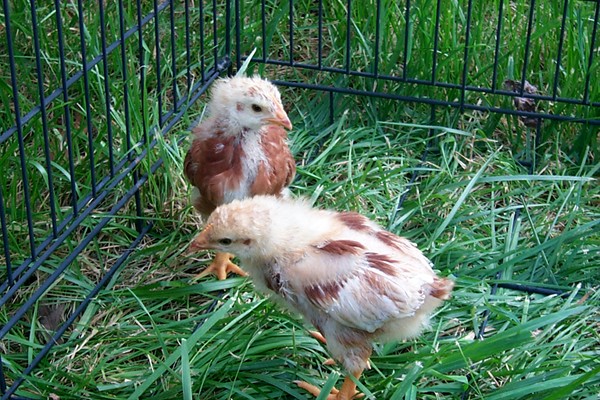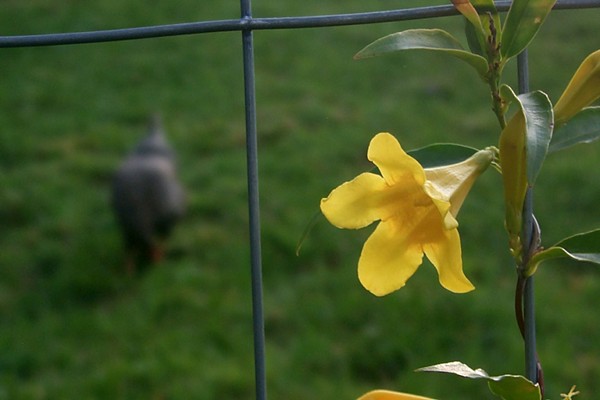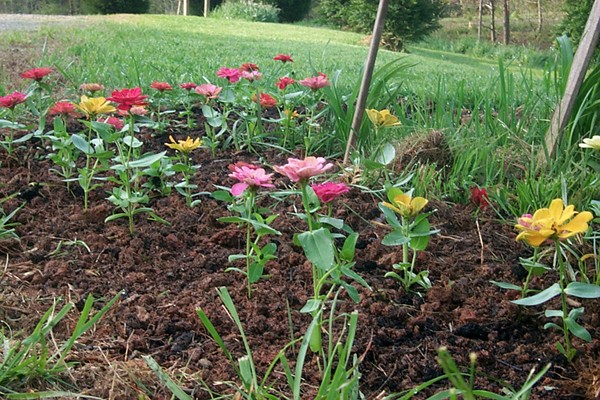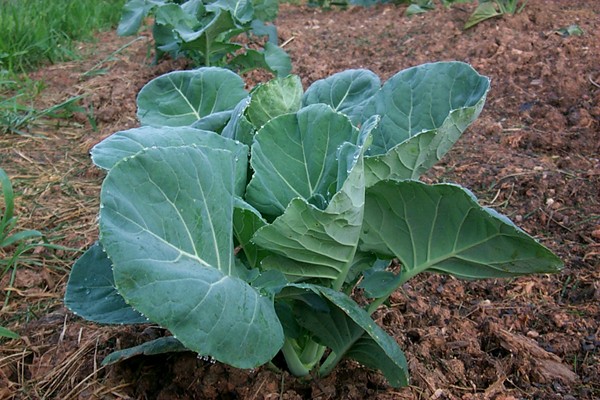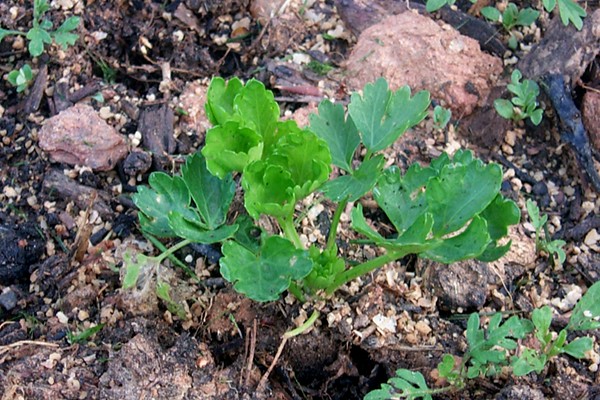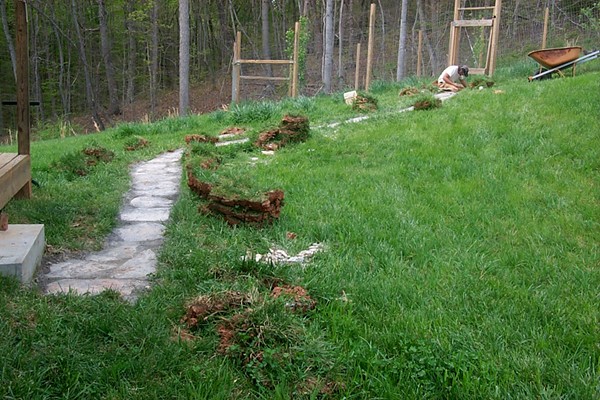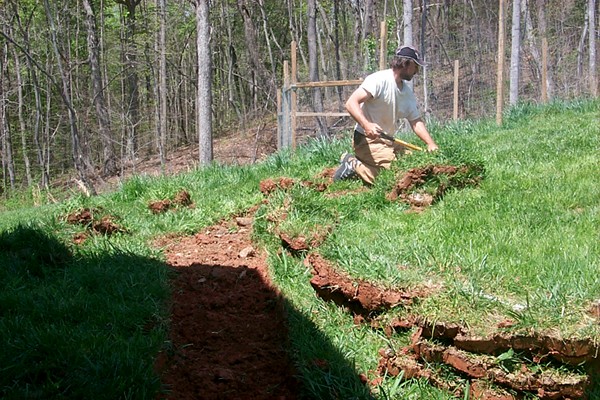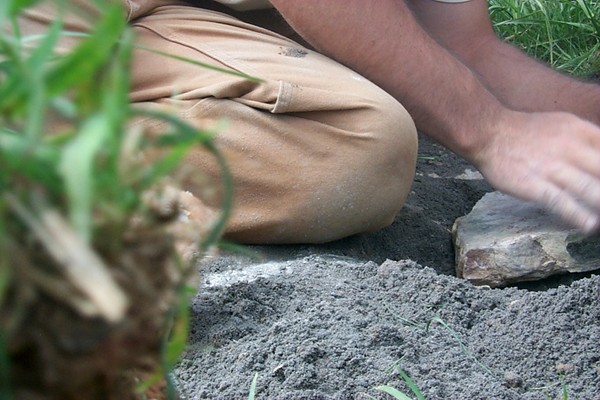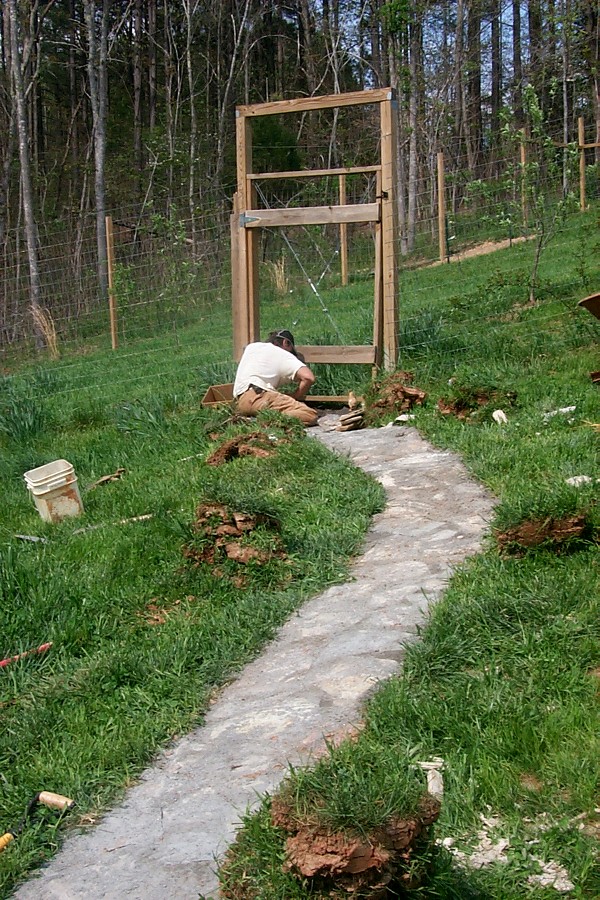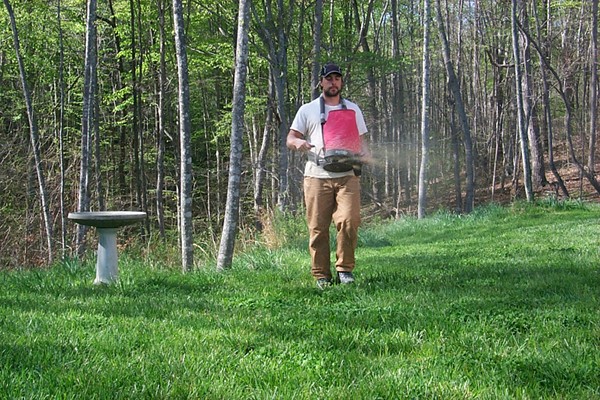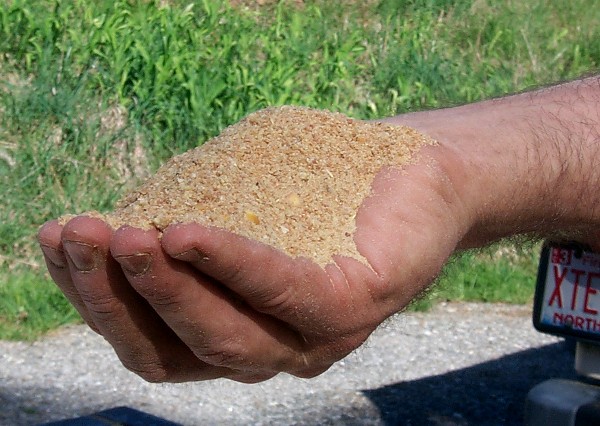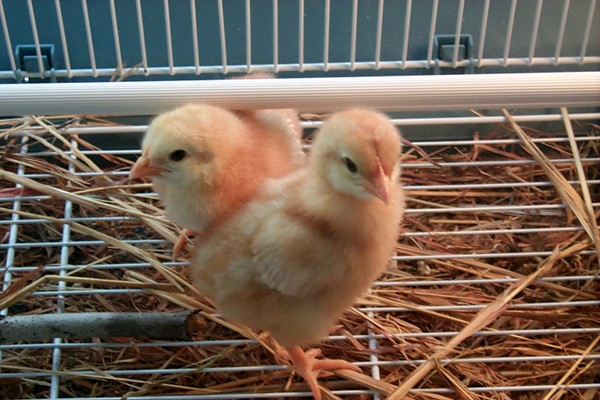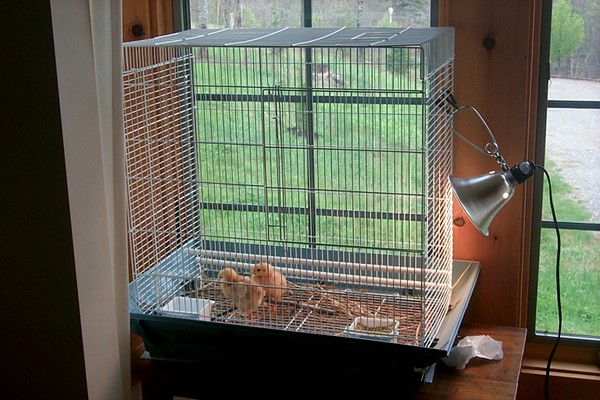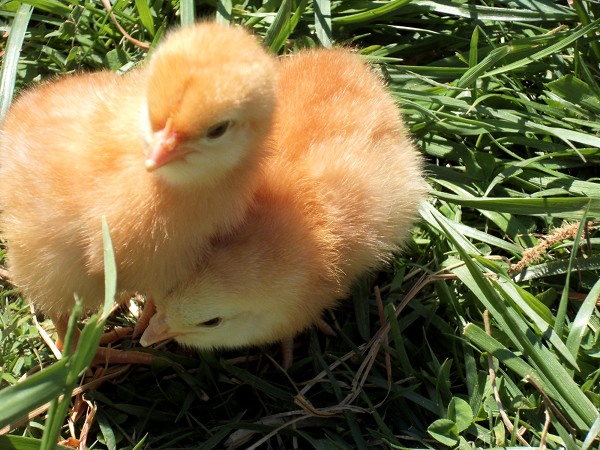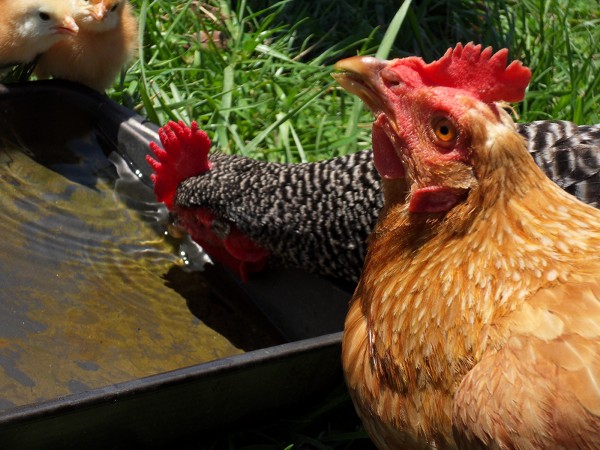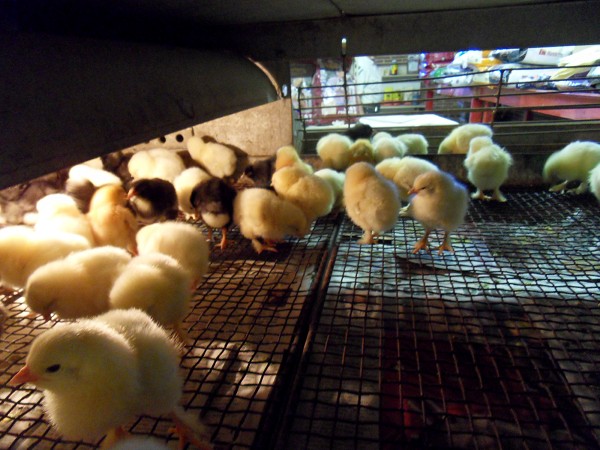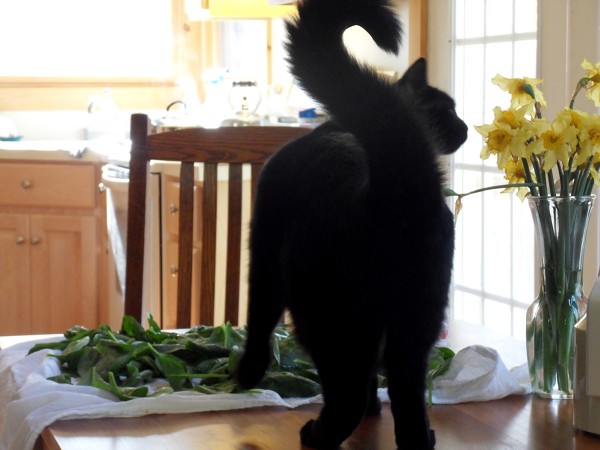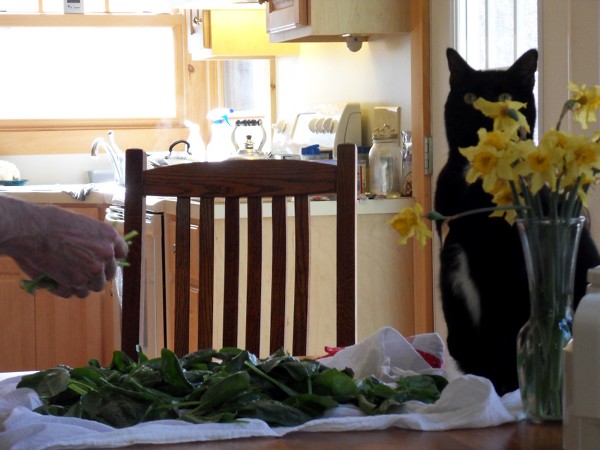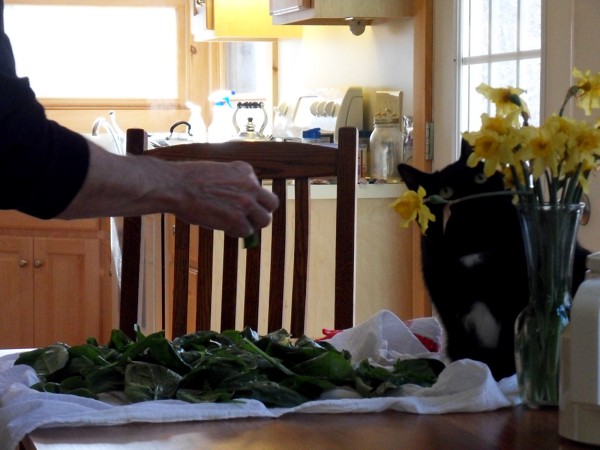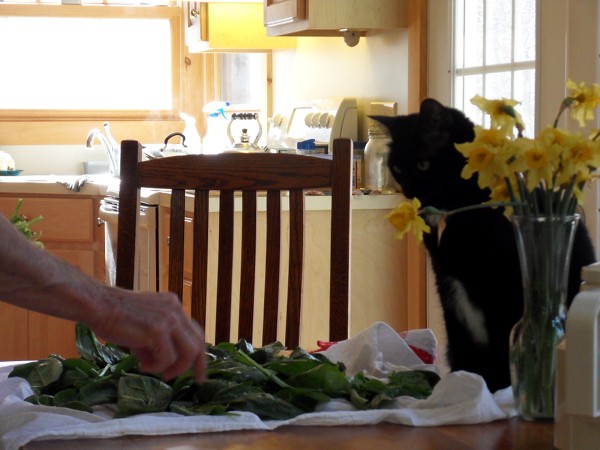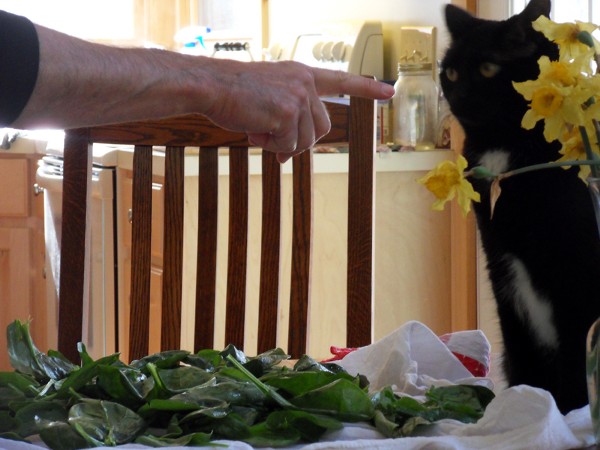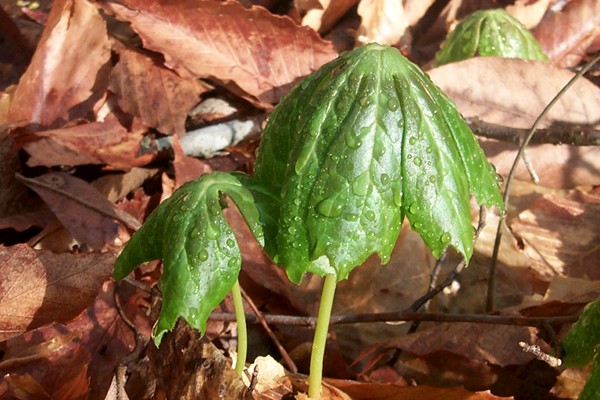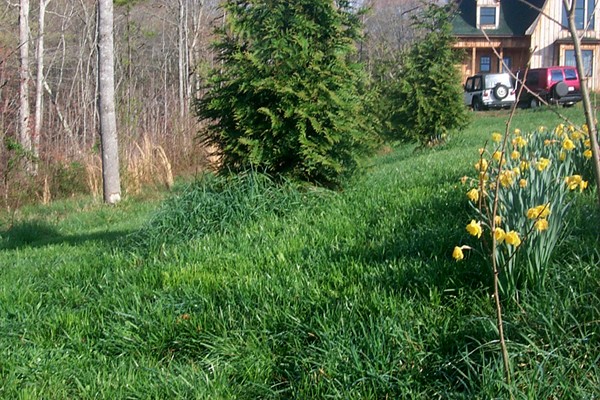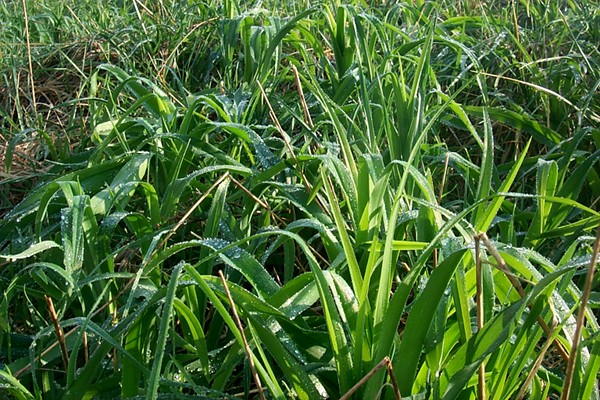The chickens are now about 25 day old. They’re growing new feathers and look rather shabby. They’re now spending their daytimes in a large cage outdoors, though they still come in at night to their smaller cage.
Garden report
The garden path
Ken finished a project yesterday that had been needed for a long time. He made a garden path from the side porch to the garden gate, using stones from a local quarry and granite sand as the base.

Ken kept an eye on the baby chickens while he worked.

Not that they had any interest in running away.

The hens, always nosy, want to know what this highway is that’s appeared at their back door.
Going all organic
Originally, my plan for Acorn Abbey was to have an all-organic garden but to use chemical fertilizers for the lawn. I have changed my mind. All organic is the way to go.
Reading more books about organic gardening, and Googling for more information on earthworms, is what convinced me to go all organic. Previously my reasoning was that there wasn’t much downside to using chemical fertilizers on the grass as long as I didn’t use any herbicides or pesticides. But more reading has convinced me that it’s all about earthworms. Chemical fertilizers are just plain bad for the biology of the soil. Regular use of chemical fertilizers causes organic matter in the soil to be burned up. This starves the earthworms. Actually it’s a double whammy for the earthworms, because not only is their food source burned away, the chemicals also are toxic to the worms.
I learned that the benefits provided by earthworms go far beyond their ability to digest organic matter in the soil and convert the organic matter to forms more suitable for plants to use. Earthworms also dig burrows (largely vertical, and much deeper than I can till) in the soil. These burrows “till” the soil and provide channels that improve the ability of soil to deeply absorb rainwater. Plant roots also tend to follow the burrows downward, so plants can root more deeply in soil that has been tilled by earthworms.
That seals the deal for me — deep tilling and better absorption of rainwater. Earthworms help soil catch more water, channel the water deeper, and improve plants’ access to water, not to mention plants’ drought resistance.
Soybean meal is said to be the equivalent of a 7-2-1 fertilizer. That’s more nitrogen than the 5-4-3 fertilizer based on chicken manure that I’ve been using in the garden. The 7-2-1 fertilizer alone is probably fine for the grass. For the garden I’ll probably start concocting my own organic fertilizer with soybean meal, lime, and an organic phosphate source.
Soybean meal is also easy to get. I have to drive 60 miles each way to get commercial organic fertilizers in 50 pounds bags. But the local mill in Walnut Cove always has soybean meal. The price is about the same as the 5-4-3 organic fertilizer.
I think this is particularly important in my orchard, where the earthworms will help get nutrients to the roots of the fruit trees.
Today Ken spread 500 pounds of soybean meal everywhere — grass, orchard, garden and wildflower patches. From this day forward, Acorn Abbey is all organic.
Cabbage report
The weather for the past week has been perfect cabbage-growing weather — frequent rain, sunny days in the 70s, and warm nights. The cabbages are going crazy.
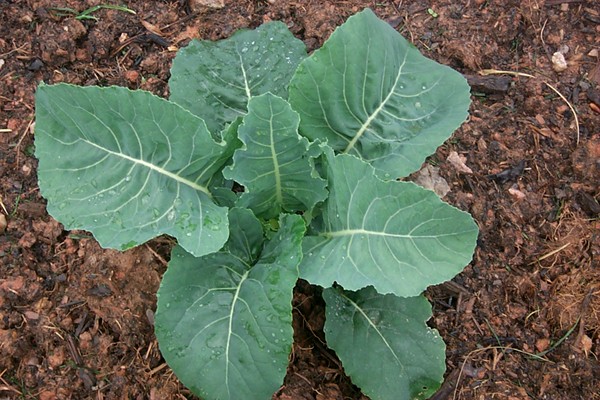
This, I believe, is not a cabbage but one of its brethren — broccoli, brussels sprouts, or cauliflower. I have quite a few of each.
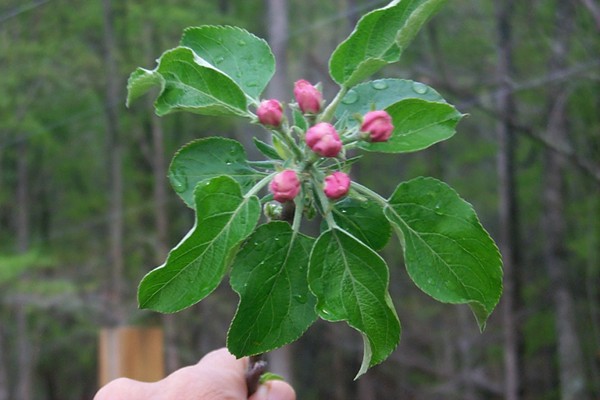
I’m disappointed at how few apple blossoms I have this year.
Update on the chicken children
The baby chickens have been with us for six days now. They’re thriving. They live in the warmest spot in the house — inside the south-facing bay window in Ken’s room.
Keeping them in cardboard boxes just doesn’t work very well. It’s hard to keep things clean, and the babies can’t see out. So I splurged on a bird cage at Pet Smart. It was on sale, but still the cost of it is something that will have to be justified over many years. All future generations of baby chickens will be able to use it. I’ll just wash it and put it in the attic between generations.
The new chickens are Golden Comets, like Ruth. Ruth is a better layer than the two Barred Rock hens, and laying is what it’s all about.
Baby chickens
Yesterday was baby chicken day, a day we’d been waiting for since the note appeared on the bulletin board at the roller mill giving the date — April 4 — when this year’s spring chickens would arrive from the hatchery.
We had talked a great deal about how to encourage one of the hens to adopt the two chicks. But no one was interested. Patience and Chastity were curious but aloof, and Ruth even got hostile at one point and pecked at one of the chicks. Nobody got hurt, but nobody got adopted. We’ve fallen back on Plan B — raising the chicks indoors in a box with a heat lamp until they’re big enough to take care of themselves.
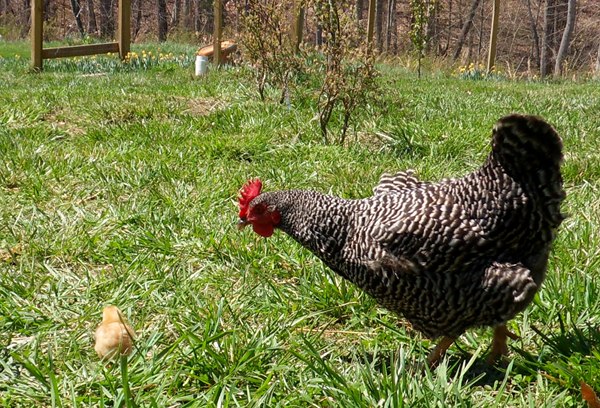
Chastity is not sure she approves.
Why I'll never have a B&B license
Not that I’d ever want Acorn Abbey to be a bed and breakfast, but even if I did, the health department would never give me a license. Cats are not allowed in B&B kitchens.
Lily is almost as nosy as Ruth, one of the chickens. I easily convinced her that she doesn’t like spinach, but she still wanted to watch and get in the way.
The young may apple in April
Yesterday, while looking for a place down by the woodland stream to plant pawpaw trees, Ken and I came across two big stands of may apple. Though may apple is not exactly rare in the Appalachians and foothills, it’s an honor to have so much may apple growing down below the abbey, and it speaks well of the quality of the woodland soil. Though may apple also is called mandrake, I don’t believe it’s a member of the mandrake family that is so important in myth and witchcraft.
There are two separate stands of may apple, totaling 3,000 to 4,000 square feet. The leaves are still immature. I’ll make more photographs as the season progresses. The may apple should have blooms later in the spring, and it should bear fruit during the summer.
Every spring, I am amazed at the variety of habitat and micro-climates around the abbey. I have only five acres, but into those five acres are packed a sunny acre with house, garden, orchard, and chicken lot. I have quite a lot of grass (some of the yard will soon be converted to wildflower patches). There is almost a thousand feet of woodland boundary, facing south. This is where the rabbit patches, the fox den, and the groundhog holes are located. Lots of things love to live at the edge of the woods, especially with a view to the south. The land falls off steeply below the abbey, and a little stream winds through four acres of woodland, which I have not and will not disturb (except to plant pawpaws, which are native to this area). On the lower end of the property, the little stream merges with another little stream in a moist bottom that loves to grow mushrooms. This is where we’ve put the shiitake mushroom logs.
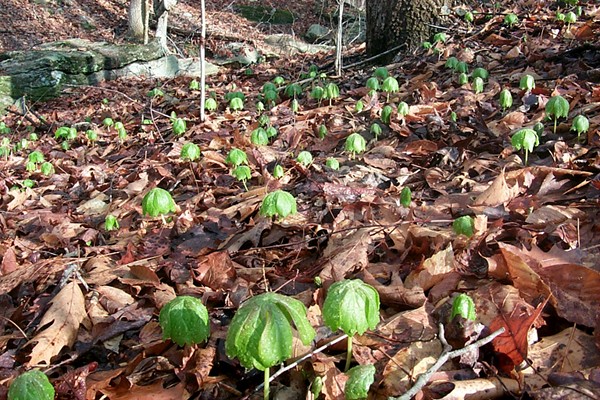
A stand of may apple. This is only a small part of the may apple area beside the little stream.
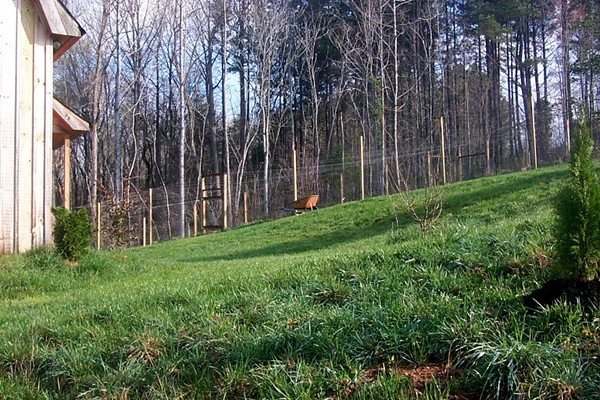
The grass is green at the abbey and getting greener.
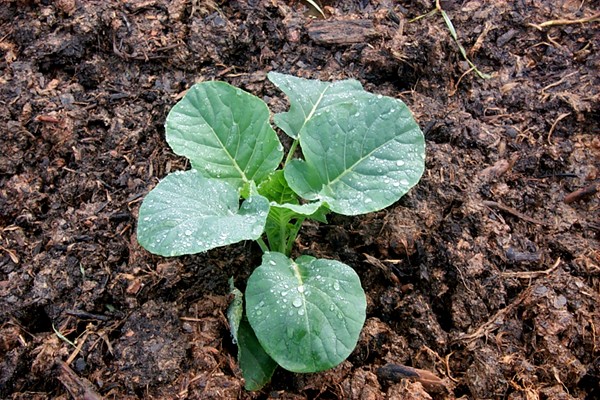
I’m awfully proud of the cabbage and can’t stop photographing it.
Typewriters: A new symbol of cool
Back in November when I had my IBM Selectric III reconditioned, I speculated that there ought to be clubs for typewriter enthusiasts. As I posted at the time, “I’ve been thinking that there ought to be typewriter clubs these days — for people who still have and use typewriters and who send each other typewritten notes in the mail just for the heck of it.”
Today the New York Times confirms that this is the case. Nor is this a case of old folks like me being sentimental about old technology. Today’s typewriter clubs, according to the Times, are mostly young folks, members of the literati and technorati. They have typewriter sales, as well as “type-ins,” and they send each other notes by snail mail (as I have been doing with a few old friends).
Most of the renewed interest in typewriters seem to be focused on manual typewriters, particularly portables. But it’s the Selectrics and the office-size typewriters that I really love.
Be sure to look at the photo side show attached to the Times article.
My faith in the younger generations just went up a couple of notches.

